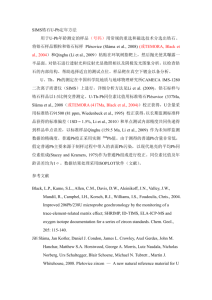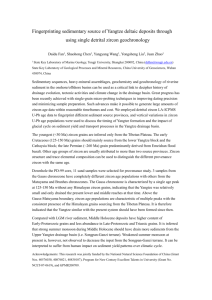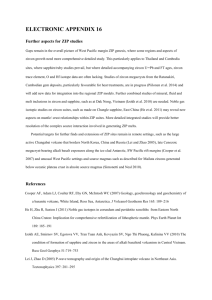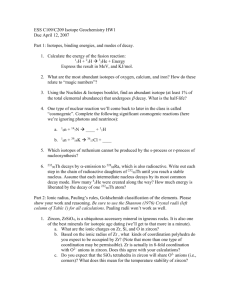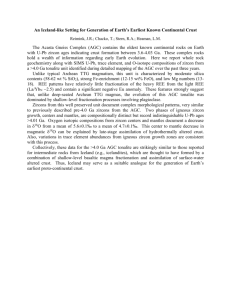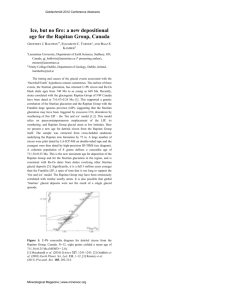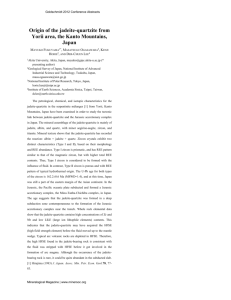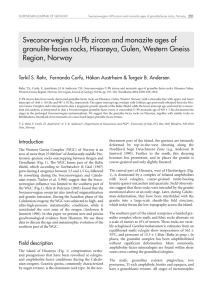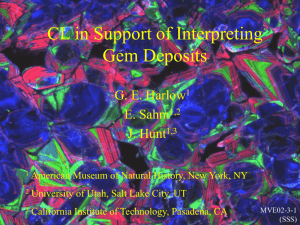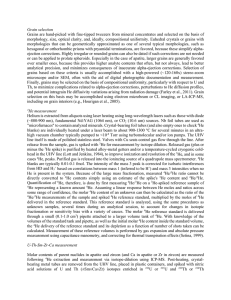Material properties and microstructure from
advertisement
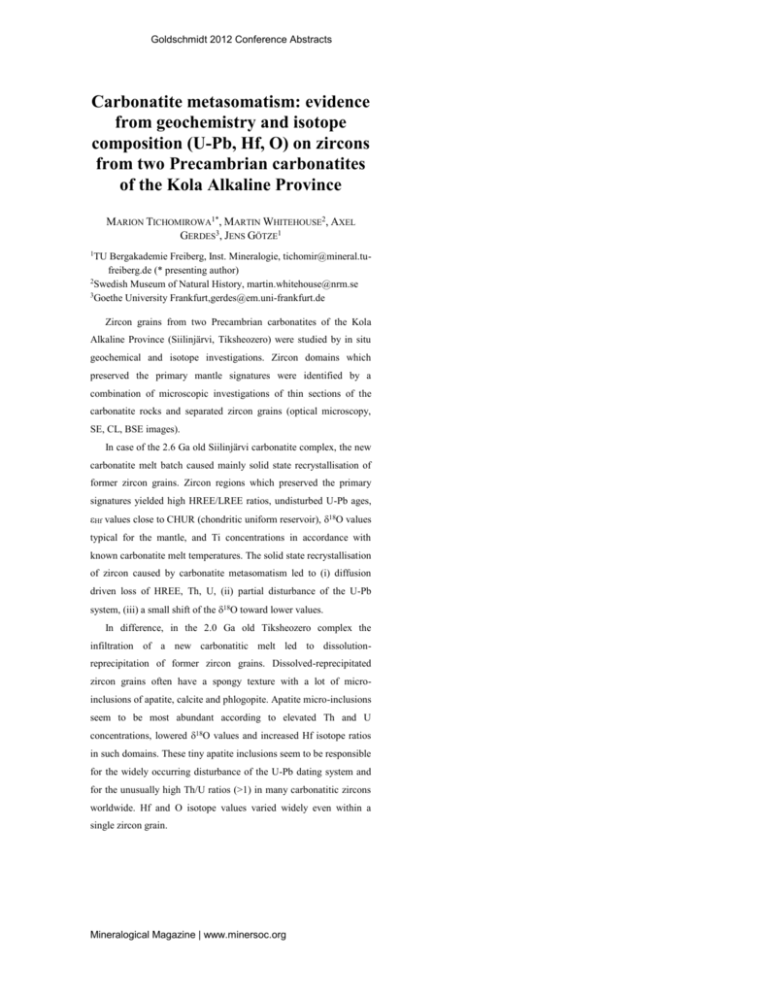
Goldschmidt 2012 Conference Abstracts Carbonatite metasomatism: evidence from geochemistry and isotope composition (U-Pb, Hf, O) on zircons from two Precambrian carbonatites of the Kola Alkaline Province MARION TICHOMIROWA1*, MARTIN WHITEHOUSE2, AXEL GERDES3, JENS GÖTZE1 1TU Bergakademie Freiberg, Inst. Mineralogie, tichomir@mineral.tufreiberg.de (* presenting author) 2Swedish Museum of Natural History, martin.whitehouse@nrm.se 3Goethe University Frankfurt,gerdes@em.uni-frankfurt.de Zircon grains from two Precambrian carbonatites of the Kola Alkaline Province (Siilinjärvi, Tiksheozero) were studied by in situ geochemical and isotope investigations. Zircon domains which preserved the primary mantle signatures were identified by a combination of microscopic investigations of thin sections of the carbonatite rocks and separated zircon grains (optical microscopy, SE, CL, BSE images). In case of the 2.6 Ga old Siilinjärvi carbonatite complex, the new carbonatite melt batch caused mainly solid state recrystallisation of former zircon grains. Zircon regions which preserved the primary signatures yielded high HREE/LREE ratios, undisturbed U-Pb ages, Hf values close to CHUR (chondritic uniform reservoir), 18O values typical for the mantle, and Ti concentrations in accordance with known carbonatite melt temperatures. The solid state recrystallisation of zircon caused by carbonatite metasomatism led to (i) diffusion driven loss of HREE, Th, U, (ii) partial disturbance of the U-Pb system, (iii) a small shift of the 18O toward lower values. In difference, in the 2.0 Ga old Tiksheozero complex the infiltration of a new carbonatitic melt led to dissolutionreprecipitation of former zircon grains. Dissolved-reprecipitated zircon grains often have a spongy texture with a lot of microinclusions of apatite, calcite and phlogopite. Apatite micro-inclusions seem to be most abundant according to elevated Th and U concentrations, lowered 18O values and increased Hf isotope ratios in such domains. These tiny apatite inclusions seem to be responsible for the widely occurring disturbance of the U-Pb dating system and for the unusually high Th/U ratios (>1) in many carbonatitic zircons worldwide. Hf and O isotope values varied widely even within a single zircon grain. Mineralogical Magazine | www.minersoc.org
